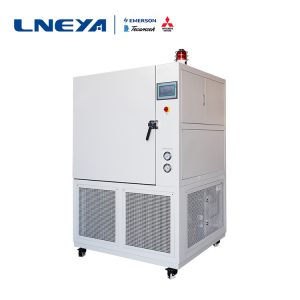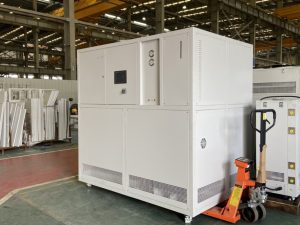Why does a chiller need to be installed for cooling the water storage tank?
The main reasons for configuring a chiller for cooling the water storage tank are related to the following aspects:
Temperature Control: In many industrial and commercial applications, such as air conditioning systems, chemical processes, food processing, pharmaceutical production, etc., the water in the water storage tank needs to be maintained at a specific low temperature state to meet process requirements or provide cooling capacity. The chiller reduces the temperature of water in the storage tank by circulating cooling water or refrigerant, and maintains this temperature within the set range to ensure stable system operation and product quality.
Improving Efficiency: In some applications, such as the comparison between air-cooled water chillers and water-cooled chillers, it is mentioned that chillers can provide higher cooling efficiency by directly cooling circulating water instead of relying on ambient air for heat dissipation. Especially when the ambient temperature is high, the chiller can provide low-temperature water more stably, avoiding the impact of environmental temperature fluctuations on the cooling effect.
Save Water Resources and Energy: The cooling system of the water storage tank equipped with a chiller can reduce water consumption by circulating cooling water. Meanwhile, modern chiller design emphasizes energy efficiency and adopts energy-saving technologies such as variable frequency drive and high-efficiency heat exchangers to reduce energy consumption.
Equipment Protection: In some process flows, such as reactor cooling in pharmaceutical processes and precision equipment cooling in semiconductor manufacturing, the chiller stabilizes the cooling water temperature to prevent equipment damage or performance degradation caused by high temperatures, thereby extending the service life of the equipment.
Environmental Adaptability: In areas with unreliable natural water sources or high temperatures, chillers can provide stable cooling capacity and are not affected by external environmental changes, ensuring uninterrupted cooling services throughout the year.
Flexibility and Scalability: The chiller can adjust its cooling capacity according to actual needs. For systems that require flexible adjustment of cooling capacity or may be expanded in the future, the chiller provides good adaptability and scalability.
In summary, configuring a chiller for cooling water storage tanks not only ensures precise temperature control and improves overall system efficiency, but also plays an important role in protecting critical equipment, saving resources, and adapting to different environmental conditions.
customized indoor and outdoor chillers
Raccomandazioni correlate
-
What are the price factors affecting 60P freezers?
1097When users choose 60P freezers, they are very concerned about the price. Then the factors affecting the price, Wuxi Guanya (LNEYA) need to make everyone understand. The freezer brand is an important intangible asset of a company or product, and is...
Visualizza i dettagli -
What are the functions of the controllers for semiconductor temperature control equipment?
757In the temperature control equipment of semiconductor components, each accessory has a different function. Due to the different functions, the function of the temperature control valve and controller of the semiconductor components of LNEYA is dif...
Visualizza i dettagli -
How to choose a heating and cooling circulating water bath?
1333Heating and recirculating water bath In the process of selection, heating power, cooling power, pressure and flow are also factors that users need to consider. Good system design and accessory brand selection are related to the whole heating and c...
Visualizza i dettagli -
What are the characteristics and application scope of cryogenic refrigeration circulators?
1124Specializing in the development and production of low-temperature refrigeration circulators, the refrigeration temperature range is from -120 degrees to -30 degrees. Today, let us take a look at the characteristics of low-temperature refrigeration...
Visualizza i dettagli
 Refrigeratori industriali LNEYA Produttore Fornitore
Refrigeratori industriali LNEYA Produttore Fornitore















